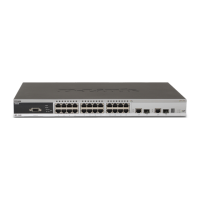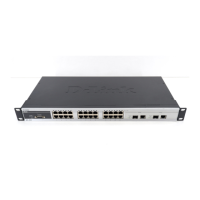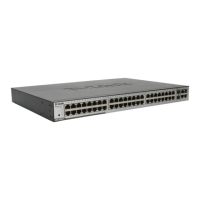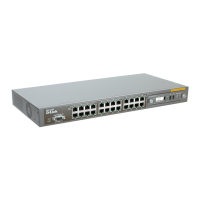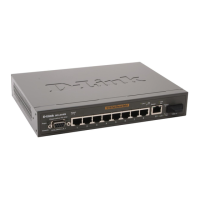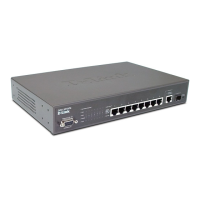xStack DES-3526 / DES-3526DC Layer 2 Stackable Fast Ethernet Managed Switch User Manual
25
Auto Config
State
When autoconfig is enabled, the Switch is instructed to get a configuration file via TFTP, and it
becomes a DHCP client automatically. The configuration file will be loaded upon booting up. In
order to use Auto Config, the DHCP server must be set up to deliver the TFTP server IP address
and configuration file name information in the DHCP reply packet. The TFTP server must be
running and have the requested configuration file stored in its base directory when the request is
received from the Switch. Consult the DHCP server and/or TFTP server software instructions for
information on loading a configuration file for use by a client. (Also see the section titled Upload
Configuration for instructions on uploading a configuration to a TFTP server.
If the Switch is unable to complete the autoconfiguration process the previously saved
configuration file present in Switch memory will be loaded.
Click Apply to let your changes take effect.
Setting the Switch's IP Address using the Console Interface
Each Switch must be assigned its own IP Address, which is used for communication with an SNMP network manager or other
TCP/IP application (for example BOOTP, TFTP). The Switch's default IP address is 10.90.90.90. You can change the default
Switch IP address to meet the specification of your networking address scheme.
The IP address for the Switch must be set before it can be managed with the Web-based manager. The Switch IP address can be
automatically set using BOOTP or DHCP protocols, in which case the actual address assigned to the Switch must be known. The
IP address may be set using the Command Line Interface (CLI) over the console serial port as follows:
• Starting at the command line prompt, enter the commands config ipif System ipaddress xxx.xxx.xxx.xxx/
yyy.yyy.yyy.yyy. Where the x's represent the IP address to be assigned to the IP interface named System and the y's
represent the corresponding subnet mask.
• Alternatively, you can enter config ipif System ipaddress xxx.xxx.xxx.xxx/z. Where the x's represent the IP
address to be assigned to the IP interface named System and the z represents the corresponding number of subnets in
CIDR notation.
The IP interface named System on the Switch can be assigned an IP address and subnet mask which can then be used to connect a
management station to the Switch's Telnet or Web-based management agent.
The system message Success indicates that the command was executed successfully. The Switch can now be configured and
managed via Telnet and the CLI or via the Web-based management agent using the above IP address to connect to the Switch.
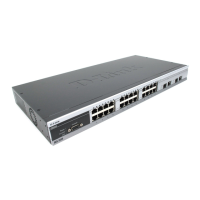
